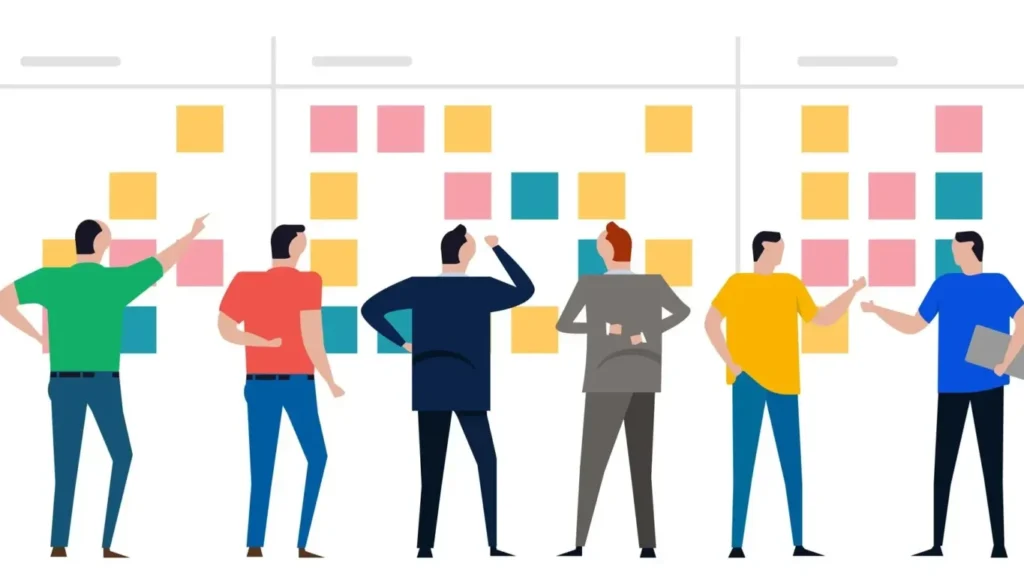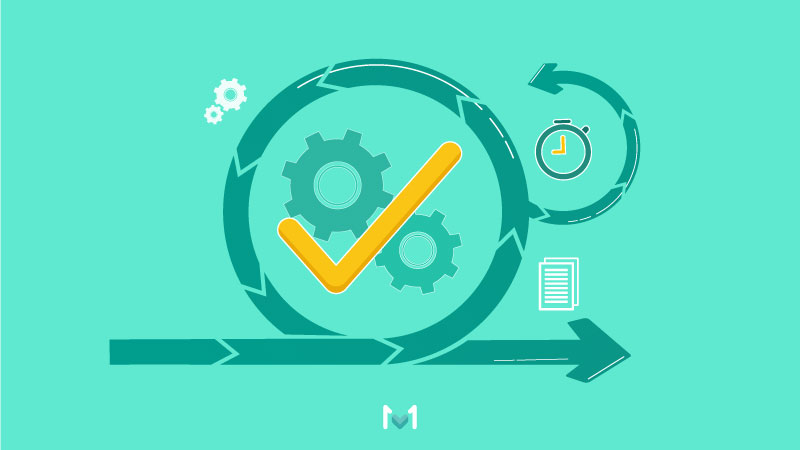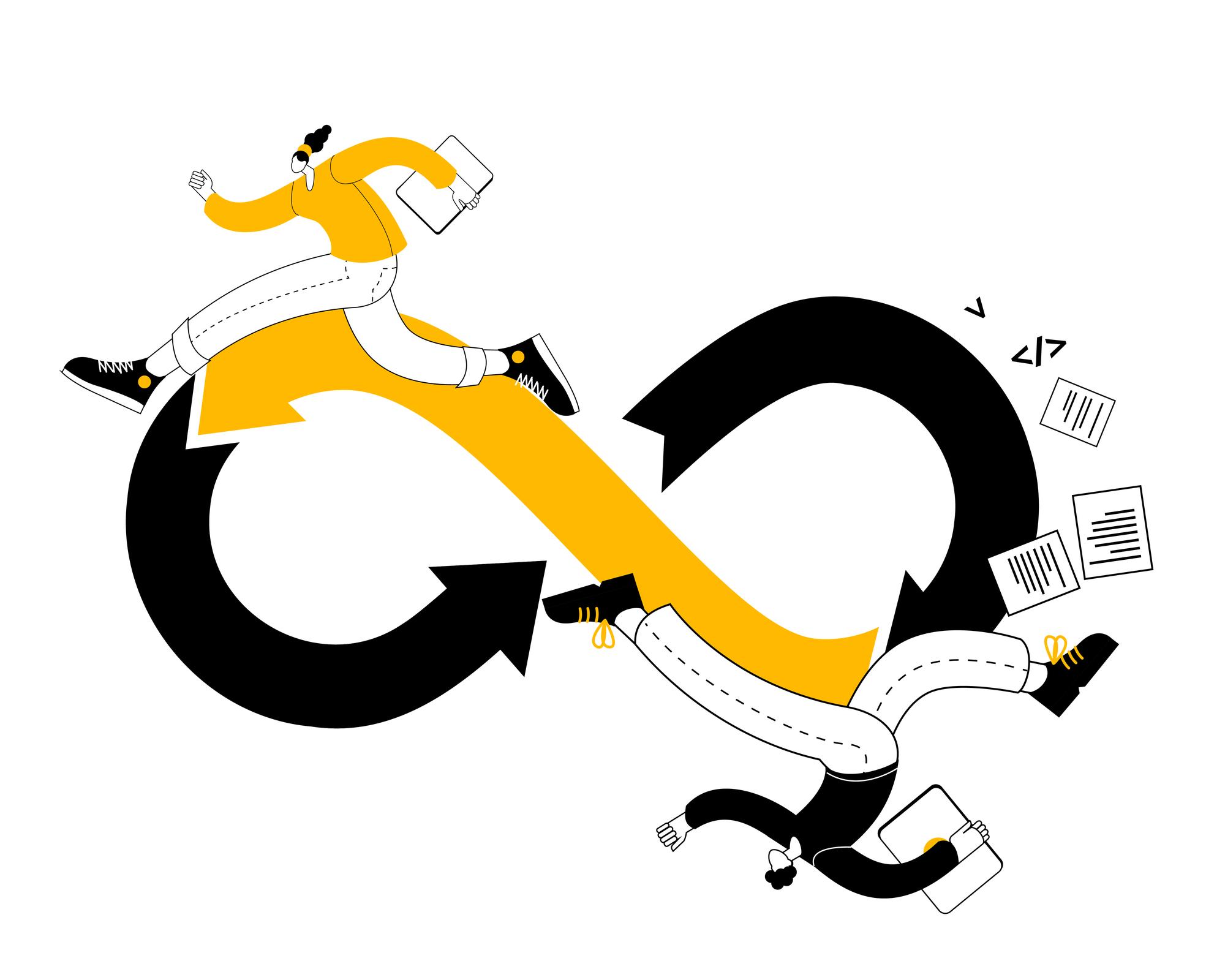Welcome to a fresh perspective on agility—where being nimble isn’t just a trendy buzzword but a game-changing approach to work that truly makes a difference.
Every team, from HR to IT, needs to be adaptable, innovative, and connected. In this blog, we’ll break down real-world examples of agile success, share practical steps for building a robust agile delivery model, and explore the tools and strategies that empower teams to overcome common obstacles.
So, whether you’re a seasoned project manager or just curious about how agile can transform your organization, get ready to dive in and discover how a little agility can drive better results and a more engaged workforce.
Let’s jump in!
What is Agile Delivery?
Think of Agile Delivery as the secret sauce behind fast-moving, high-performing teams. It’s a way of working that helps teams break big projects into smaller, manageable pieces—so instead of spending months (or years) building something only to realize it’s not what customers actually want, Agile teams deliver work in small, frequent increments. This allows them to test, get feedback, and adjust quickly, keeping projects on track and valuable to end users.
Agile isn’t just one process—it’s an entire mindset built on flexibility, collaboration, and continuous improvement. The most common Agile frameworks, like Scrum, Kanban, and Lean, all have their own approach, but they share the same core principles: work fast, get direct customer feedback, and adapt as you go.
Scrum, for example, organizes work into short “sprints” and includes structured events like daily check-ins and retrospectives to keep everything moving smoothly.
But Agile isn’t just about processes and frameworks—it’s about people. Agile teams work cross-functionally, meaning designers, developers, and business folks collaborate closely instead of working in silos. This speeds up decision-making and ensures what’s being built actually meets user needs.
▶️ Looking for a deeper dive into agile methodologies and how they can supercharge your team’s efficiency? Check out our comprehensive guide on Agile Project Management: Proven Tactics to Boost Efficiency for battle-tested strategies that drive real results
The Key Principles of Agile Software Delivery

1. Collaboration: Building Stronger Teams, Faster
Great teams don’t happen by accident—they’re built through trust, communication, and shared goals. Agile thrives on collaboration because everything runs smoother when people work together effectively. Studies show that well-functioning teams can boost productivity by up to 30%1, and from an HR perspective, that’s gold.
Whether it’s daily stand-ups, cross-functional meetings, or just an open Slack channel, teams that communicate well solve problems faster and work more efficiently. Plus, when employees feel connected and valued, they’re more engaged, which means better retention and job satisfaction.
2. Customer Focus: Keeping the “Why” Front and Center
Agile companies don’t just build things—they build the right things. That’s because customer feedback is baked into the process. Studies show that 93% of Agile companies report better customer satisfaction because they listen, adapt, and deliver what people actually want2.
But this doesn’t just impact customers—it creates a sense of purpose for employees too. When people can see how their work directly impacts users, it fuels motivation and engagement. HR’s role? Make sure employees get this feedback loop, so they don’t just feel like cogs in a machine but key players in delivering value.
3. Value-Based Prioritization: Focus on What Matters
Not all tasks are created equal, and Agile teams understand that. Instead of working down a never-ending to-do list, they prioritize the highest-impact work first. This approach isn’t just smart—it’s empowering. Employees don’t waste time on low-value tasks, and they can see how their contributions directly move the company forward.
From an HR perspective, this means creating an environment where employees know why their work matters and can take ownership of their impact. A clear sense of purpose leads to higher motivation and job satisfaction.
4. Iterative Development: Learning and Improving Every Day
Agile is all about progress over perfection. Instead of spending months planning every detail, teams work in short cycles—building, testing, learning, and improving as they go.
This doesn’t just lead to faster delivery—it also creates a workplace culture where it’s okay to experiment, fail, and learn. Employees are encouraged to adapt, pivot, and continuously improve, keeping work exciting and inspiring innovation. HR’s role here? Foster a growth mindset. Celebrate small wins, encourage continuous learning, and make it safe for teams to take smart risks.
Agile Delivery Basics and Benefits

Agile Mindset & Environment
At its core, agile is about embracing change instead of fearing it. It’s about creating an environment where teams collaborate, experiment, and improve continuously.
Unlike rigid structures that can slow things down, agile teams have the freedom to adapt, test new ideas, and learn from mistakes without fear of failure.
Research shows that companies with a strong agile culture experience 30% higher productivity, and from an HR perspective3, that’s a major win. Employees who feel empowered to make decisions and innovate are more engaged and committed to their work.
Speed to Market
One of the biggest advantages of agile is its ability to dramatically shorten the time it takes to launch a product or feature. Traditional project management often leads to long development cycles, where teams spend months (or years) planning before anything reaches the customer.
Agile flips this model by delivering work in short, iterative cycles, allowing companies to launch faster and get real-time feedback.
In fact, 70% of agile organizations report faster delivery times, helping them stay ahead of competitors and respond quickly to market changes. 4For businesses, this means they can pivot when needed, minimize risks, and meet customer demands faster than ever.
Higher Quality: Delivering Work That Actually Works
Agile isn’t just about speed—it’s about getting things right the first time. Instead of waiting until the end of a project to test and fix problems, agile teams constantly review and refine their work.
Studies show that companies using agile methodologies see a 250% improvement in quality because they catch issues early and adjust as they go. This iterative approach reduces costly mistakes and ensures that every product version is better than the last.
From an HR perspective, this also boosts employee morale—when people take pride in their work and see its impact, engagement and motivation naturally increase.
Transparency: Keeping Everyone on the Same Page
Ever worked on a project where no one really knew what was going on? Agile solves that problem by making everything visible to everyone—from project goals to daily progress updates.
Agile ensures that teams are aligned and accountable, Whether through daily stand-up meetings, sprint reviews, or shared task boards. This transparency doesn’t just improve project execution; it also builds trust and encourages open communication. When employees understand the bigger picture and how their work contributes to it, they feel more valued and motivated to perform at their best.
Agile Delivery Frameworks
Scrum: Structure, Sprints, and Teamwork

Scrum is like a well-organized relay race. Work is broken down into short, focused bursts called sprints (usually 2–4 weeks long), where teams tackle specific tasks, review progress, and adjust as needed. This framework creates a steady rhythm of delivery and regular feedback loops, keeping projects on track and teams aligned with business goals.
It’s no surprise that most of agile teams use Scrum, and for good reason—it improves alignment between daily work and company objectives. For HR and leadership, this is a win because employees stay engaged, have a clear sense of purpose, and work in an environment where accountability and collaboration thrive. Regular sprint reviews ensure that challenges are addressed quickly, reducing frustration and keeping motivation high.
▶️ Scrum is one of the most widely used agile frameworks for a reason—it helps teams iterate faster and deliver better. Learn how to maximize its potential with our Scrum Project Management Guide, packed with insights that can 8X your team’s productivity.
Kanban: Visualizing Work, Reducing Overload

Kanban is all about visibility. Imagine a digital or physical board with columns like “To Do,” “In Progress,” and “Done”—that’s the core of Kanban. It helps teams see where work is piling up, identify bottlenecks, and streamline processes. Unlike Scrum, Kanban doesn’t work in fixed sprints but focuses on continuous delivery, allowing teams to move at their own pace.
A big advantage? Agile teams use Kanban to improve workflow efficiency and reduce burnout. From an HR perspective, this is huge—when employees can manage workloads better, they feel less overwhelmed and stay more productive. The transparency also helps managers track progress in real time without micromanaging, leading to a more self-sufficient and empowered workforce.
Lean: Cutting the Waste, Maximizing the Value
Lean is all about doing more with less—but in a way that eliminates inefficiencies without overloading teams. It originated from manufacturing but has become a go-to strategy in agile development. Lean encourages teams to focus only on what truly adds value, cut unnecessary steps, and continuously improve processes.
While Lean is often blended with Scrum or Kanban, its principles are game-changers for businesses looking to improve efficiency, reduce waste, and enhance product quality. When applied well, Lean creates a culture of innovation and learning, where employees aren’t just completing tasks but actively looking for ways to improve the way work is done.
▶️Kanban is all about visualizing work, eliminating bottlenecks, and improving workflow efficiency. Want to see how it can revolutionize your agile delivery? Read our Kanban Project Management Guide to unlock key strategies for continuous workflow improvement.
Agile Delivery Practices
Lead Self-Organized and Independent Teams
Imagine a workplace where teams don’t have to wait for approvals at every step, where they have the freedom to make decisions and adapt quickly. That’s the power of self-organized teams—and research backs it up. Self-organizing teams can boost productivity because they don’t waste time waiting for instructions; they take ownership and drive solutions forward.
From an HR perspective, this is a win-win. Employees who have autonomy feel more engaged, creative, and accountable for their work. But to make this work, leaders must set clear goals, provide the right tools, and create a culture of trust. Micromanagement? That kills innovation. Instead, focus on empowering teams with guidance, not control, and you’ll see a surge in both efficiency and morale.
Maintain Direct Customer Contact
The best products aren’t built in a vacuum. Agile teams that stay in direct contact with customers consistently deliver better results. Why? Because they get real-time feedback, understand what truly matters, and can pivot quickly when needed.
Companies that engage directly with customers see higher satisfaction rates and stronger product adoption. When developers and product teams hear directly from users, they connect their work to real-world impact—which is a huge motivator.
This means facilitating opportunities for these interactions, whether through customer interviews, user testing, or direct feedback loops. A team that understands why their work matters is a team that’s more driven, motivated, and customer-focused.
Treat Each New Feature as an Experiment
Agile delivery is all about learning fast and adapting, so every new feature should be treated as an experiment, not a final product. The best teams launch small, test often, and iterate quickly. Instead of spending months building something only to realize it’s not what customers want, agile teams test early, gather insights, and improve continuously.
This approach reduces risk and fosters a culture of innovation and continuous learning. It tells employees: “You don’t have to get it perfect the first time—just keep improving.” HR plays a role here, too, by promoting a safe space for experimentation, where failure isn’t punished but seen as a stepping stone to success. When employees feel safe to try, learn, and grow, they become more confident, engaged, and innovative.
One-to-One Meetings with Developers
Regular one-on-one check-ins can be the difference between a thriving, engaged employee and someone on the verge of burnout. Agile teams move fast, and without consistent check-ins, people can feel lost, overwhelmed, or undervalued.
One-to-ones create a safe space for open conversations—not just about work progress, but about challenges, career goals, and overall well-being. Employees who feel heard and supported are more likely to stay motivated and contribute at a high level.
For HR and managers, these meetings are a goldmine for insights—they help spot potential burnout, improve engagement, and build stronger relationships with team members. The key? Make them meaningful. Go beyond surface-level updates and focus on real conversations that help employees grow and succeed.
Spotify Model, The Best Example of Agile Delivery
If you’ve ever wondered how some of the world’s most innovative companies keep teams aligned, motivated, and productive, look no further than the Spotify Model. Originally developed to help Spotify scale while staying true to agile principles, this model has become a blueprint for organizations worldwide looking to balance autonomy with alignment.
At its core, the Spotify Model is designed to give teams ownership and flexibility while maintaining collaboration across the company. Here’s how it works:
- Squads: These are small, cross-functional teams that operate like mini-startups. Each squad has everything it needs to build, test, and deploy a feature from start to finish—without waiting for approvals from other departments.
- Chapters: Since squads work independently, Chapters help ensure consistency and knowledge-sharing across teams. A chapter is made up of individuals with similar skill sets (like backend engineers or UX designers) who support each other’s growth and best practices.
- Tribes: Think of a tribe as a group of related squads working on a bigger goal. This structure keeps alignment across larger teams while still allowing squads to move quickly.
- Guilds: These are company-wide communities of interest where employees can connect, learn, and share ideas outside of their squads and chapters.
What makes the Spotify Model so effective is that it eliminates bottlenecks, increases autonomy, and boosts collaboration—all while keeping teams aligned with business goals. Studies show that companies using agile frameworks like this see productivity gains of 20-30% because employees feel more empowered, engaged, and connected to their work.
How to Overcome Pitfalls & Organizational Resistance
One of the biggest roadblocks to agile adoption? Fear of change. People are used to their ways of working, and suddenly shifting to sprints, stand-ups, and self-organizing teams can feel overwhelming. The best way to overcome this resistance is education and empowerment.
- Make agile feel approachable – Host interactive workshops, training sessions, and real-life case studies to show teams the benefits. When people see how agile makes their work easier, not harder, they’re more likely to embrace it.
- Celebrate small wins – Agile isn’t an overnight transformation. Highlight quick successes from early adopters to build momentum. Companies that focus on small, achievable improvements see a 40% reduction in project delays because teams are motivated to keep iterating.
- Encourage feedback – Agile thrives on continuous improvement. Give teams a space to voice concerns and refine processes together. When employees feel heard, resistance turns into engagement.
Managing Stakeholders in a Rapidly Changing Environment
Stakeholders—whether they’re executives, customers, or cross-functional teams—need to see the value in agile for it to stick. Many resist because they fear losing control or visibility into projects. The key? Keep them involved and informed.
- Show, don’t just tell – Instead of long strategy meetings, invite stakeholders to sprint demos where they can see real progress in action. Seeing is believing.
- Keep communication short and focused – Agile and your updates move fast. Use dashboards, brief check-ins, and visual reports to keep everyone aligned without overwhelming them with details.
- Bring them in early – Get stakeholders involved before major decisions are made. When they feel like partners in the process, they’re more likely to support (and champion) agile ways of working.
5 Steps to Building an Agile Delivery Model
Step 1: Align Technology to Business Capabilities
Before you can truly be agile, your technology must support your business goals. It starts with evaluating your current tech infrastructure to ensure it’s capable of rapid iteration, seamless collaboration, and real-time data sharing.
In practice, this means selecting tools that integrate easily and foster transparent communication. Companies that align their technology with business strategies often experience reduction in time-to-market.
From an HR standpoint, this alignment not only streamlines operations but also ensures that employees have the right resources to perform at their best, ultimately driving both innovation and customer satisfaction.
Step 2: Identify Business and Technology Leaders
An agile transformation requires champions from both sides of the business. You need leaders who understand the strategic objectives and can bridge the gap between technology and business. These leaders are essential for fostering an environment where teams feel empowered and supported.
Research shows that organizations with strong leadership buy-in see higher success rate in agile transformations. When leaders from HR, IT, and business units work together, they set clear priorities, remove roadblocks, and create a unified vision that motivates employees across the organization.
Step 3: Start Small and Then Expand
Don’t try to reinvent the wheel overnight. Begin with a pilot project—a small, low-risk initiative where agile practices can be tested, refined, and proven effective. This approach allows teams to experience early wins and learn valuable lessons before scaling agile practices across the organization.
Starting small can increase the overall success rate of agile adoption. This step builds confidence within teams and creates a solid foundation for broader transformation, ensuring that lessons learned are effectively communicated and replicated across departments.
Step 4: Launch Teams and Continually Improve
Once your pilot has succeeded, it’s time to expand agile practices to additional teams. Agile isn’t a one-time fix; it’s a continuous journey of learning and improvement. By forming cross-functional teams and embedding regular feedback loops—through daily stand-ups, sprint reviews, and retrospectives—you foster an environment where innovation is encouraged and processes are constantly refined.
Companies that embed continuous improvement into their agile practices report boost in efficiency. For HR, this means increasing productivity and nurturing a growth mindset among employees, which is essential for long-term success.
Step 5: Continually Improve the Governance Model
Agile doesn’t mean throwing governance out the window—it means making it flexible and supportive. Traditional, rigid governance structures can hinder agility by creating unnecessary bureaucracy. Instead, adopt a dynamic governance model that evolves with your agile practices. Regularly review and adjust policies to remove bottlenecks while ensuring accountability and quality.
Organizations that update their governance models to support agile ways of working see improvements in cross-team collaboration and faster decision-making, with some reporting enhancement in execution speed. For HR, this step is critical in ensuring that as your agile teams grow, the overarching systems and policies continue to empower rather than constrain them.
Conclusion
Agile isn’t just about working faster—it’s about working smarter, adapting quickly, and building a culture where teams thrive. Throughout this blog, we’ve explored the key tactics to overcome resistance, integrate the right tools, manage stakeholders, and implement agile frameworks that actually work. We’ve also looked at real-world success stories—proving that when agile is done right, it leads to faster delivery, stronger teams, and better business outcomes.
But here’s the thing—agile is a journey, not a destination. Every organization faces unique challenges, and the best way to grow is by sharing and learning from each other.
So now, I want to hear from you! What’s been your biggest win (or challenge) with agile delivery? Drop a comment below, share your experiences, and let’s keep the conversation going. And if this blog helped you, pass it along to your network—because when we share knowledge, we all get better. 🚀
References
- Workflow optimization: implementation, efficiency, maintenance, trends, and sustainability. (n.d.). CADDi | Manufacturing Intelligence. https://caddi.asia/resources/workflow-optimization ↩︎
- Lees, H. (2022, September 14). 29 Agile Methodology Statistics and Trends for 2022. TrustRadius for Vendors. https://solutions.trustradius.com/buyer-blog/agile-methodology-statistics-trends/ ↩︎
- Aghina, W., Handscomb, C., Salo, O., & Thaker, S. (2021, May 25). The impact of agility: How to shape your organization to compete. McKinsey & Company. https://www.mckinsey.com/capabilities/people-and-organizational-performance/our-insights/the-impact-of-agility-how-to-shape-your-organization-to-compete ↩︎
- Parabol. (2024, January 19). 300+ Agile and scrum Statistics for 2024 | Parabol. https://www.parabol.co/resources/agile-statistics ↩︎


One Response
risks can emerge quickly due to the fast-paced nature of the work. How do you identify and mitigate risks early in the process? Are there any specific frameworks or tools you rely on?